The Catalan Romanesque Churches of the Vall de Boí are located in the Pyrenees Mountains in northern Spain. The Vall de Boí is a narrow ans steep-sided valley in Catalonia, the Vall de Boí (Boí Valley) is known for its Catalan Romanesque Churches. The Catalan Romanesque Churches of the Vall de Boí were built in the Lombard Romanesque style, an architectural style imported from northern Italy. The churches were built between the 11th and 14th centuries. The Catalan Romanesque churches of Vall de Boí are characteristic for their elaborate brickwork, huge bell towers and wall paintings. The Romanesque paintings of the Catalan Romanesque Churches of the Vall de Boí are famous and considered to be among the best examples of the Romanesque art in Spain. Today, most of the original Romanesque murals have been replaced by copies, the original murals are preserved in the National Museum of Catalan Art and the Episcopal Museum of Vic in Barcelona, the capital city of Catalonia. The Catalan Romanesque Churches of the Vall de Boí gained the status as a UNESCO World Heritage in 2000.
www.werelderfgoedfotos.nl © Copyright World Heritage Photos
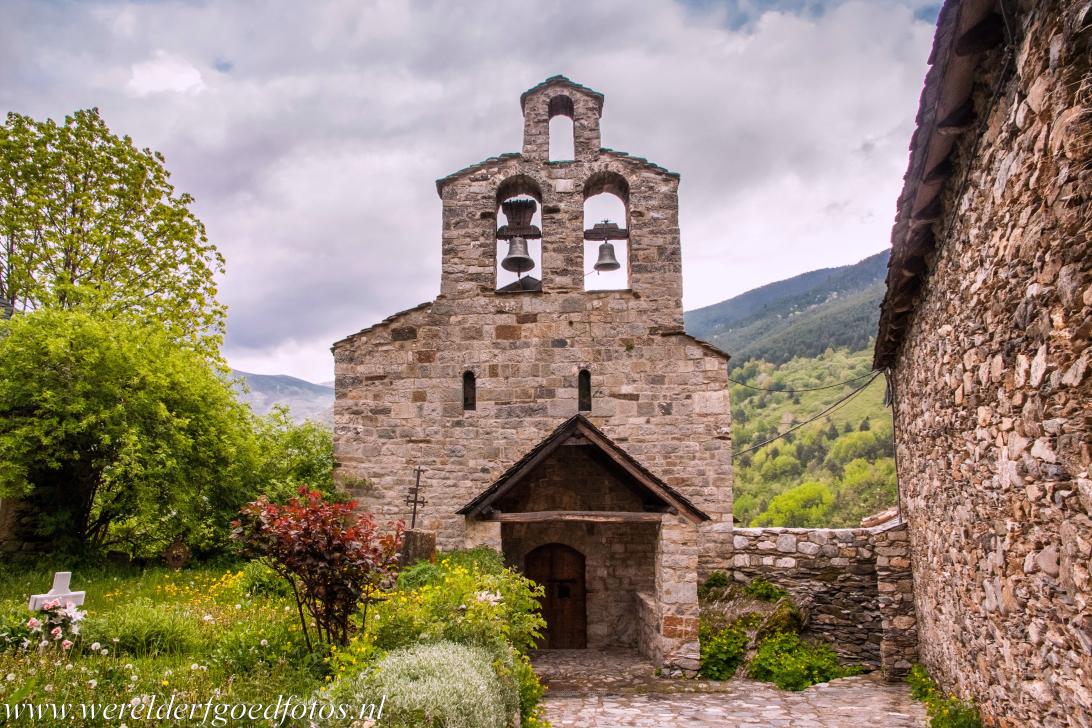
The Church of Santa Maria de Cardet is situated at the entrance to the Vall de Boí. Santa Maria de Cardet is situated above a steep sloop. The church was built in the 11th century. Unlike the other churches in the Vall de Boí, Santa Maria de Cardet has a Baroque bell-gable. Santa Maria de Cardet is part of the UNESCO World Heritage: Catalan Romanesque Churches of the Vall de Boí. The Vall de Boí, the Boí Valley, is known for its Catalan Romanesque Churches.

The Church of Santa Maria de Cardet is situated at the entrance to the Vall de Boí. Santa Maria de Cardet is situated above a steep sloop. The church was built in the 11th century. Unlike the other churches in the Vall de Boí, Santa Maria de Cardet has a Baroque bell-gable. Santa Maria de Cardet is part of the UNESCO World Heritage: Catalan Romanesque Churches of the Vall de Boí. The Vall de Boí, the Boí Valley, is known for its Catalan Romanesque Churches.
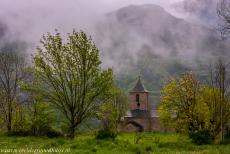
Catalan Romanesque Churches of Vall de Boí: The Santa Maria de l'Assumpció de Coll. The tiny Church of Santa Maria de l'Assumpció de Coll was probably built during the 12th century. Coll is a tiny village in the Vall de Boí, the Boí Valley. Coll is situated at an approximate altitude of 1,180 metres above sea level. Coll has about thirty inhabitants. The Catalan Romanesque Churches of the Vall de Boí were declared a UNESCO World Heritage in 2000.
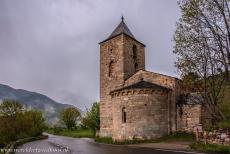
The Catalan Romanesque Church of Santa Maria de l'Assumpció de Coll. Just below the roof, the exterior walls are decorated with a row of blind semi circular arches which surround the entire apse of the church. The Catalan Romanesque Churches of the Vall de Boí are situated in the north of Spain, on the edges of the Pyrenees Mountains. The Catalan Romanesque Churches of the Boí Valley are surrounded by a magnificent landscape of high mountains, rivers and valleys.
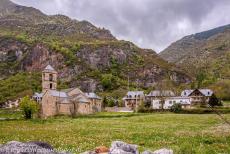
Catalan Romanesque Churches of the Vall de Boí: The Church of Sant Feliú is situated outside the village of Barruera. The Church of Sant Feliú de Barruera was built in the 11th century, the church has a single nave and two apses, one of the apses was added in the 12th century. The 11th century apse is decorated with pilaster strips and a row of blind semi circular arches, the apse has also rough stonework.

The Church of Sant Feliú de Barruera was first documented in the late 13th century, but little is known about the history of the church. The first two storeys of the tower were constructed in the Romanesque style, the upper storeys were built in the 16th century. Sant Feliú de Barruera is part of the UNESCO World Heritage Site: Catalan Romanesque Churches of the Vall de Boí. The Romanesque Churches of the Vall de Boí were built between the 11th and 14th centuries.
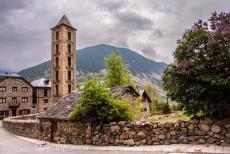
Catalan Romanesque Churches of the Vall de Boí: The Santa de Eulalia de Erill La Vall is located in the small village of Erill La Vall. The church is known for an important group of 12th century wooden sculptures: 'Erill La Vall Descent from the Cross', the artist of the sculptures is unkown. Today, the original wooden sculptures of 'Erill La Vall Descent from the Cross' are preserved in the National Museum of Catalan Art and the Episcopal Museum of Vic in Barcelona.
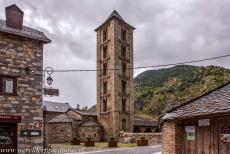
The Santa de Eulalia de Erill La Vall has one of the most spectacular bell towers in the Vall de Boí. The tower is 23 metres high, it was also used as a watchtower. The church has a single nave and three apses, the floor plan of the apses is shaped like a clover-leaf, probably meant as a symbol of Trinity. The church is located in the village of Erill La Vall. The Santa de Eulalia de Erill La Vall is part of the UNESCO World Heritage: Catalan Romanesque Churches of the Vall de Boí.
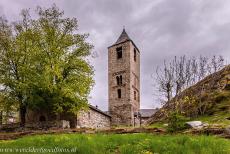
The bell tower of the Church of Sant Joan de Boí has three storeys. The first two storeys have the typical Lombard Romanesque decorations, such as semi circular arches, the third storey was built much later. The Church of Sant Joan de Boí is part of the UNESCO World Heritage: Catalan Romanesque Churches of the Vall de Boí. The Vall de Boí is a valley on the edges of the Pyrenees Mountains. The village of Boí gives its name to this rural and quite isolated valley.

The Church of Sant Joan de Boí was built during the 11th and 12th centuries. The nave and the two aisles are separated by Romanesque arches that rest upon solid columns. Just like the other churches in the Vall de Boí, the Church of Sant Joan de Boí has a slate roofing. The church was modified in the 17th and 18th centuries. The Church of Sant Joan de Boí is part of the UNESCO World Heritage: Catalan Romanesque Churches of the Vall de Boí.

Catalan Romanesque Churches of Vall de Boí: The entrance of Sant Joan de Boí is adorned with Romanesque murals. The original entrance of the church is on the north façade. In the past, the façade was covered with a porch that protected the exterior murals, the murals of Sant Joan de Boí were made by the Master of Boí and are among the finest exampels of Catalan Romanesque painting, the original murals are preserved in the National Museum of Catalan Art in Barcelona.
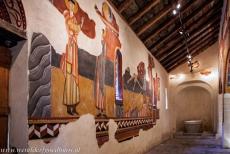
Catalan Romanesque Churches of Vall de Boí: During the last restoration of the Church of Sant Joan de Boí the original Romanesque murals were replaced by copies. The original murals of the Church of Sant Joan de Boí were painted by the so-called Master of Boí in the 12th century. Now, most of the original murals are preserved in the National Museum of Catalan Art and Episcopal Museum of Vic in Barcelona.
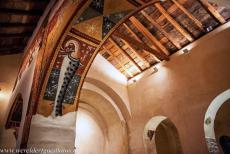
Catalan Romanesque Churches of Vall de Boí: The murals of the Church of Sant Joan de Boí. The mural paintings depict scenes from the life of saints, the most important painting is the Lapidation of Saint Stephen. The Romanesque paintings of the Church of Sant Joan de Boí are among the finest examples of Romanesque art in Spain. Nowadays, the original murals are on display in the National Museum of Catalan Art and the Episcopal Museum of Vic in Barcelona.
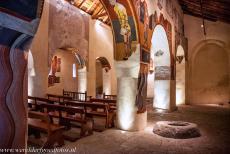
Catalan Romanesque Churches of Vall de Boí: The interior of the Church of Sant Joan de Boí is adorned with murals. Now, most of the original Romanesque murals of the Sant Joan de Boí are preserved in the National Museum of Catalan Art and the Episcopal Museum of Vic in Barcelona. The original Romanesque murals have been replaced by exact copies. The Catalan Romanesque Churches of the Vall de Boí were inscribed on the UNESCO World Heritage List in 2000.
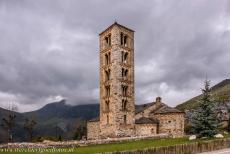
Catalan Romanesque Churches of the Vall de Boí: The Sant Climent de Taüll is the largest and best preserved Romanesque church in the Vall de Boí. The image of Christ the Pantocrater was painted by the Master of Taüll, he is considered the greatest mural painter of the 12th century in Catalonia. The original murals of the church were replaced by copies. The famous mural of Christ the Pantocrater is on display in the National Museum of Catalan Art in Barcelona.
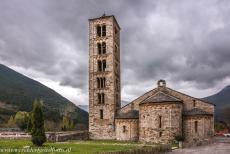
Catalan Romanesque Churches of Vall de Boí: Sant Climent de Taüll was consecrated in 1123. Inside the church were many murals by an unknown painter, the so-called Master of Taüll. The Romanesque paintings of Taüll are very famous and considered to be among the best examples of Romanesque art in Spain. The Romanesque mural paintings are preserved in two museums in Barcelona. The Sant Climent de Taüll is also known as Sant Climent de Tahull.
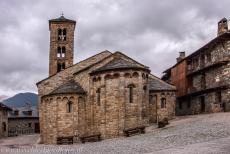
The Church of Santa Maria de Taüll was built in the 11th and 12th centuries. The church is a good example of Catalan Romanesque architecture. The Santa Maria de Taüll was consecrated in 1123. The church stands in the centre of the village of Taüll rather than on the outskirts, as is common in the Vall de Boí. The Santa Maria de Taüll is part of the UNESCO World Heritage Site: Catalan Romanesque Churches of the Vall de Boí.
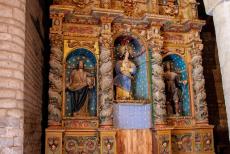
Catalan Romanesque Churches of the Vall de Boí: The Romanesque art and murals inside the Church of Santa Maria de Taüll. The mural painting in the apse depict Mary and Child and the Adoration of the Three Kings. The murals of the Santa Maria de Taüll are copies, the original murals were carefully removed and are now preserved in the National Museum of Catalan Art and the Episcopal Museum of Vic in Barcelona.
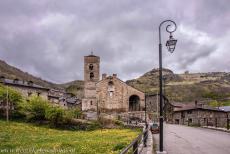
The La Nativitat de la Mare de Déu de Durro has been extended and renovated several times. Little of its original appearance remains. Two small chapels have been built into the north wall. The tower has five storeys. Inside the church stands a Romanesque carving of Nicodemus, it was originally part of the wooden sculpture 'Descent from the Cross'. The interior of the church has Baroque features from later renovations, among them an altar piece from the 17th century.
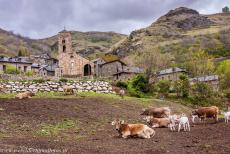
Catalan Romanesque Churches of the Vall de Boí: The La Nativitat de la Mare de Déu de Durro is surrounded by pastures and the gorgeous landscape of the Pyrenees. La Nativitat de la Mare de Déu is situated in the tiny rural village of Durro. The church was built in the 11th century, during renovations in 1983, the roof was raised. La Nativitat de la Mare de Déu de Durro is part of the UNESCO World Heritage: Catalan Romanesque Churches of the Vall de Boí.
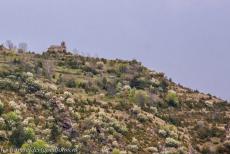
The Ermita Sant Quirc de Durro is a tiny chapel on a rocky outcrop of the Durro Mountain at a height of 1,500 metres, high above the village of Durro. The 12th century Romanesque chapel has Baroque additions. It has a single nave and a semicircular apse. The chapel was built as a territorial marker. The chapel is closed to the public. The Ermita Sant Quirc de Durro is part of the UNESCO World Heritage: Catalan Romanesque Churches of Vall de Boí.
